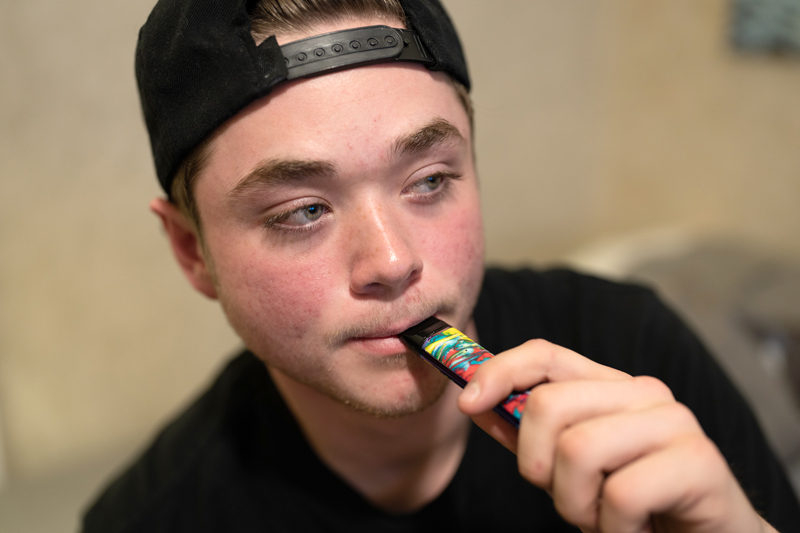The overdose crisis has always been a war, but the battlefield keeps shifting. Today, the weapon isn’t a needle or a powder bag. It’s a vape pen—sleek, pocket-sized, sold at a gas station counter, and marketed as harmless cannabis. In reality, these cartridges are Trojan horses carrying synthetic opioids more lethal than anything most people have ever seen.

I don’t write this from abstraction; I write it from the vantage point of a physician trained to see the patterns behind the curtain—the field intelligence to understand how substances move, mutate, and find their way into the bloodstream of a teenager, or the son of a colleague, or the young woman gasping for air in my detox unit.
The Intelligence Picture
In transnational public health work, you learn to respect the pipeline. Follow the precursor chemicals, the money, the points of entry, and you see the truth: the same clandestine labs that pushed fentanyl into American veins are now embedding nitazenes and 7-OH analogs into THC vapes.
The DEA’s latest threat assessment confirms at least 17 nitazene variants active in U.S. circulation. Many are invisible to standard screens. The FDA recently moved to schedule 7-OH, a potent kratom compound already appearing in vapes and gummies, as a Schedule I controlled substance. That isn’t policy drift; it’s an emergency flare.
On the ground, law enforcement seizures back it up: nearly 4,000 illegal THC vape pens were confiscated in Texas, while smoke shops in Connecticut were caught selling unlicensed cartridges to minors. These aren’t mom-and-pop mistakes. They’re evidence of a gray-market supply chain that is highly adaptive, transnational, and ruthless.
Lives, Interrupted
In Tennessee, a fellow physician’s son took what he thought was a THC vape. His toxicology report told the real story: synthetic opioids. He never made it back.
In my own unit, I admitted a young woman just last week who swore she had only vaped cannabis. Within an hour, she was in respiratory failure. We discovered her cartridge carried a nitazene analog. She lived, but survival was not guaranteed.
These aren’t anecdotes. They are signals, the kind of operational insight you ignore at your peril.
Assault by Chemistry
A heroin user knows the gamble. A young person hitting a vape in a dorm room has no such awareness. There is no consent here. This is assault by chemistry.
When I walk through my facility at sunrise, I see it in the tremors, the shallow breathing, the panic of people who thought they were taking the edge off with cannabis. What they were really inhaling was a chemical engineered for lethality.
What is presented as harmless recreational drug use is, in reality, a covert strike on American families.
Strategic Countermeasures
If this were a battlefield briefing, my recommendations would be clear. We must address the following:
- Public Awareness. No black-market THC vape is safe. Testing strips aren’t enough; nitazenes don’t show. Parents, teachers, and young people need to hear this bluntly.
- Enforcement and Intelligence. Recalibrate priorities. The counterfeit vape trade must be targeted like any other trafficking vector, with cross-border intelligence, precursor tracking, and network disruption.
- Clinical Readiness. Treat every vape exposure as a potential opioid poisoning. Naloxone must be accessible everywhere, and clinicians must be prepared for compounds resistant to reversal.
- Policy Innovation. Fund rapid aerosol detection technology. Strengthen oversight of supply chains. Move faster than the chemists designing these analogs.
The Sentinel’s Warning
The overdose crisis isn’t static. It adapts. Today it wears the face of a vape pen—colorful, discreet, fashionable. Tomorrow, it may be something else. But the threat remains the same.
I live this work every day as a physician, strategist, and operator in the truest sense. I wear the scars and the stories. And I will not stay quiet while a generation is ambushed by deadly chemistry disguised as culture.
Because the battlefield is here. And if we don’t act with clarity and speed, we will lose more than we can count.
Lucas A. Trautman, M.D., M.P.H. is Medical Director of Oxford Treatment Center. He is board-certified in Psychiatry and Addiction Medicine. He earned his medical degree from the University of Tennessee Health Science Center and an M.P.H. in International Health and Transnational Operations from Tulane University’s School of Public Health.




